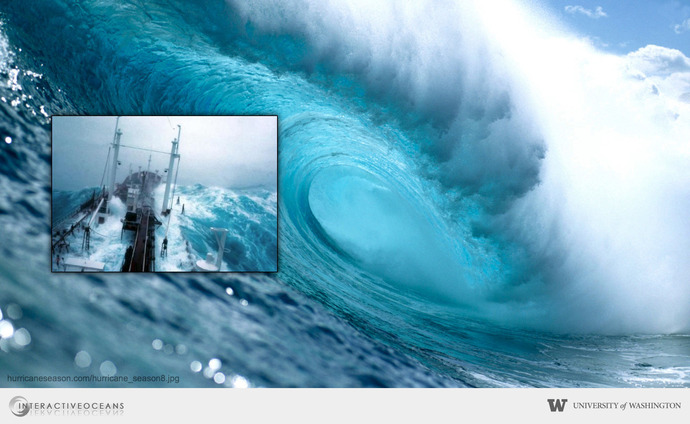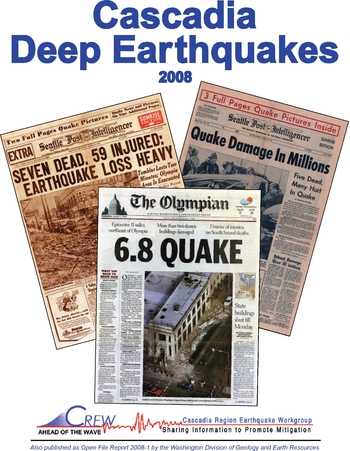Offshore cabled seismic arrays can provide early warning systems.
The oceans are the planetary flywheel for our global climate and the underlying boundaries of tectonic plates are the loci for the formation and destruction of Earth's shallow crust. In concert, these forces generate life but also are deadly when they take the form of massive storms, earthquakes, and tsunamis. The Sumatra 9.3 magnitude earthquake and follow-on tsunami that killed 300,000 people, and the still lingering devastation of Katrina, serve as vivid reminders to the catastrophic loss of life and property resulting from such events. To understand, respond to, and best mitigate these events require long-term observations, sensor arrays in the areas of interest, and real-time communication for rapid-response capabilities.
Within the Pacific Northwest the past few decades have witnessed the impacts of significant storms and moderate earthquakes. For example the 2001 6.8 magnitude Nisqually earthquake resulted in over $2 billion in damages, the 1993 Inauguration Day Storm left more than 1 million people without power and caused ~ $130M in damages, and the 2006 Hanukkah eve storm produced hurricane force winds, left 1.8 million people without power, and caused $267M in damages in Washington and Oregon. It has been estimated that a magnitude 8.5 earthquake associated with the Cascadia Subduction Zone off Washington and Oregon could result in over $12 billion in damages, 8,000 casualties, and 30,000 buildings destroyed. Recognizing the need for offshore seismic arrays in studying and detecting earthquakes Japan has invested millions of dollars in a cabled seismic array off their coast, and NEPTUNE Canada is deploying a seismic array and tsunami detection system mid plate on the Juan de Fuca Ridge.





